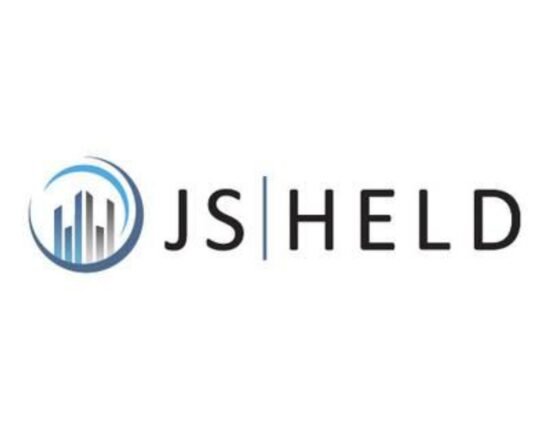A recent Newsweek piece painted a dire picture of the housing market in Phoenix. With housing inventory in the Phoenix metro area at its highest levels in about a decade, the piece quoted the CEO of a real estate app warning of a potential crash.
But, is elevated inventory really such a bad thing? Are we in the midst of a sell-off by anxious property owners, or is there something more nuanced going on?
Tina Tamboer, senior housing analyst at the Cromford Report, joined The Show to discuss an analysis of the situation.
Full conversation

SAM DINGMAN: Good morning, Tina.
TINA TAMBOER: Good morning.
DINGMAN: So Tina, as I was just mentioning, last week it was reported that the Arizona housing market has a current inventory of about 30,000 homes with about 22,000 of those here in Phoenix. Those are the highest availability numbers since, I believe, November of 2016. What do you make of these numbers?
TAMBOER: Well, I can tell you that we were not crashing in 2016, so that doesn’t necessarily mean that our values are going to crash. In fact, in 2016, our values were rising. It was a seller’s market. So what we’re seeing right now is, I would say we’re at kind of a level that has been stable for the last three years in terms of demand, kind of waiting for those mortgage rates to, to help ease up some of the suppression under 500,000 and those price points.
But we’ve had a very exuberant luxury market, specifically between 2024 and 25. So that’s been kind of keeping our prices elevated in our measures as we were a little bit top-heavy in our data sets. But more recently though, what we’ve seen is with the stock market fluctuations and some volatility and uncertainty, some of the luxury buyers have taken a pause. Just, you know, letting it slide for a little bit, seeing whether or not we’re going to get more certainty.
And at the same time we saw a boost in our sales under $500,000. So what we saw is an actual market share shift in our data set where we got a little bottom heavy and it pulled our averages down. And so I could see from the surface that it would look like prices are collapsing when in fact, very few of these by price range are you seeing any. You know, dramatic drops.
DINGMAN: Interesting, interesting. Well, what do you make of this allegation that there’s a sell-off happening because of anxiety about the U.S. economy? Do you see any evidence of that?
TAMBOER: No, not necessarily. What I see is people having to make decisions, whether they’re investors or second homeowners. We’ve got about 40% of our supply was purchased either as a rental or a second home. We had a kind of a rough short-term rental market this last spring, as, as the U.S. dollar got strong, it became more expensive for our most popular tourists from Canada to come here.
So that was definitely a drawback, in addition to some, you know, unease about the discourse between our countries, there was a little bit of of apprehension to come here, but I would say that we had kind of a rough spring for short-term rentals that has put some of them on the market, and that’s a good thing because they’re often in very good shape and come with fun things like toys and you know, furniture and things like that.
But we also have, you know, the second home market when you have the exchange rate between Canada and the U.S. became very, very positive for sellers from Canada. So we did see a bump up in listings from Canadians as well.
DINGMAN: So let’s contextualize these fluctuations a little bit. Nick Gurley, who’s the CEO of Reventure app, which is the real estate platform that I was mentioning in the setup here, his allegation in the piece is that the market is trending down, quote, “and trending down fast.” What that means in practical terms is a roughly 7% drop in home prices since their peak in June of 2022. But a lot of this was, the, the peak of those prices was pandemic related, right?
TAMBOER: The peak of those prices were really fueled by flip investing. So when you have a lot of Wall Street investment coming in, and you remember the large flip corporations like Open Door and Offer Pad and Zillow, they were all buying and selling amongst each other, even as affordability became out of reach for the general population.
So what ended up happening was they hit a peak in 2022 and then the mortgage rates started to rise, and they didn’t have anybody to sell those properties to as Wall Street pulled out and some of these investors got stuck with these properties that they had overpaid for. So that’s when we saw losses from 2022 in June all the way to December. In that six month period, we dropped about 13% in our prices, our price measures, but we bounced in 2023 and we have been pretty flat for three years.
We haven’t seen any big bold movements in price. What we’ve been seeing is the cost of the seller going up as we move into a weaker seller market, and now we’re, we’ve been in a buyer’s market now for about six to seven months, and it takes a long time for prices to actually respond to a buyer’s market, you have to be in a buyer’s market for longer than a season.
So what we’re seeing is now a weakening in price that is a result of a long-term seller buyer’s market that has kind of gotten to the point where sellers have already accepted that they’re going to come in at a reasonable price, they’ve accepted they’re going to do repairs, they’ve accepted that they’re going to pay for closing costs and rate buy downs and things like that. And now the buyers are just shaving a little more off the top.
When we look at the price points by price range, year over year changes are under 2%, and many times they’re really close to flat to where they were this time last year. Like I said, this is more of a market share shift as the luxury market pulled out due to volatility of the stock market, and that gave the under $500,000 market more market share and it pulled our averages and our medians down and it makes it look like there’s, you know, a massive drop-off when really it’s not that exciting.
DINGMAN: OK, OK, well, not that exciting. Potentially welcome news for market observers.
KJZZ’s The Show transcripts are created on deadline. This text is edited for length and clarity, and may not be in its final form. The authoritative record of KJZZ’s programming is the audio record.







